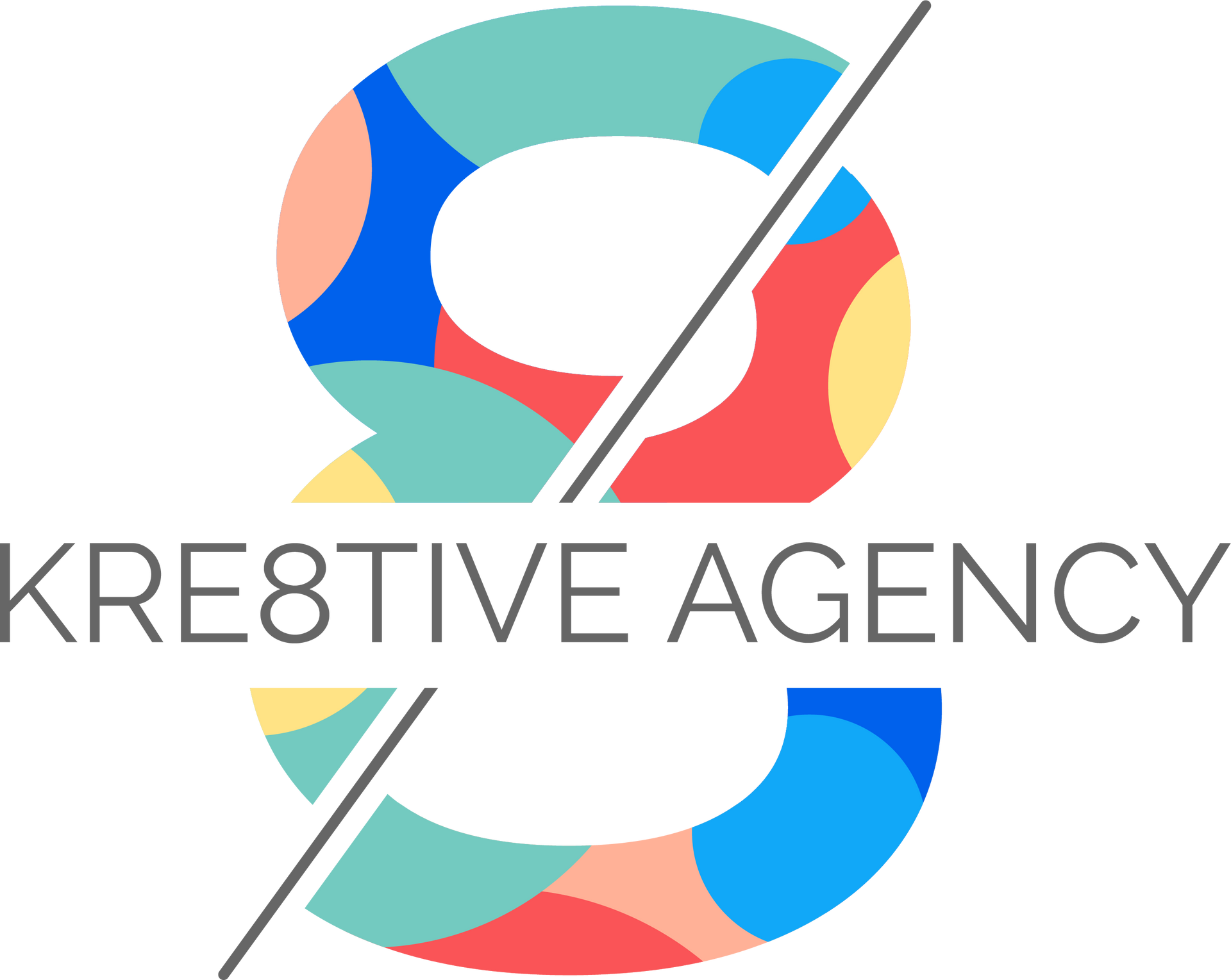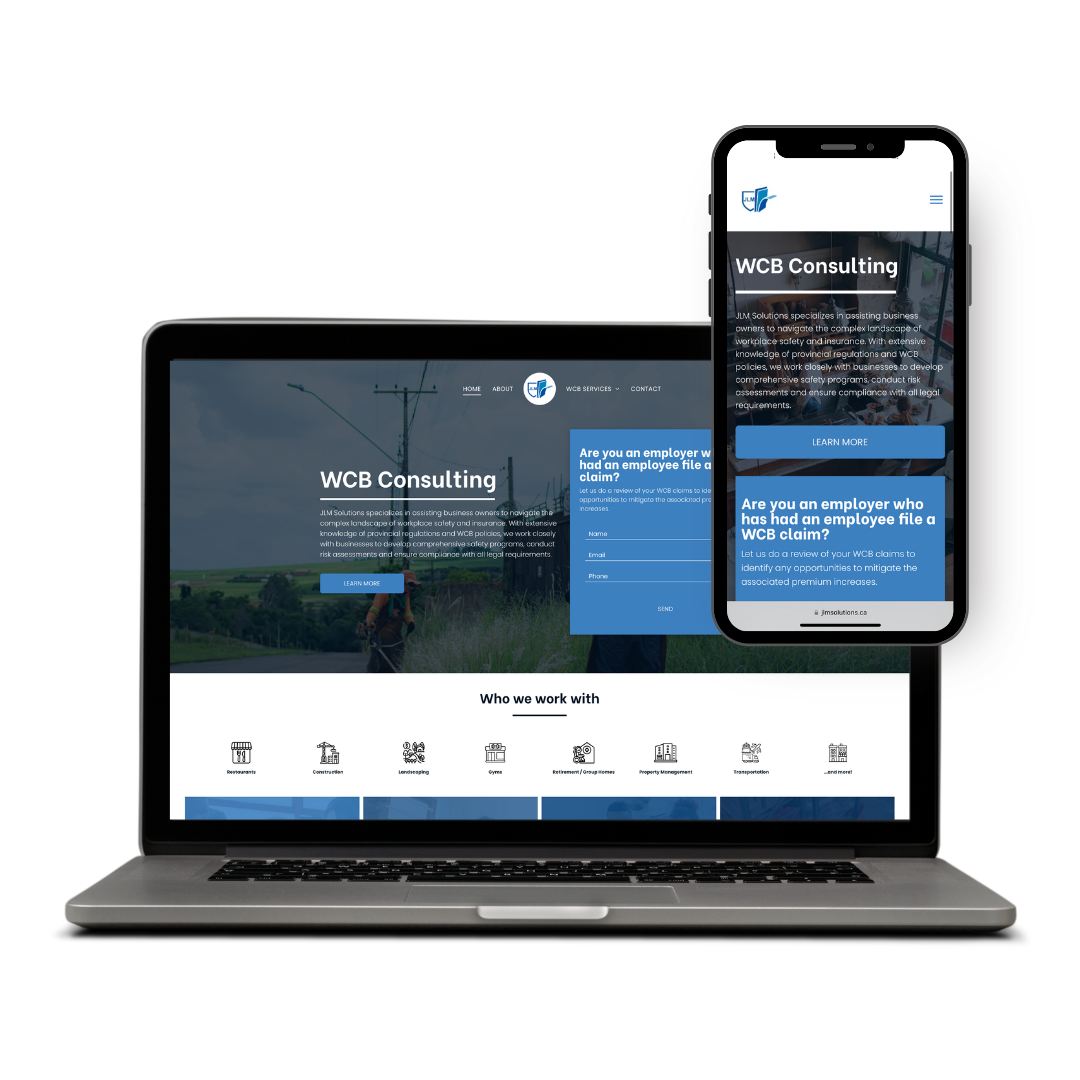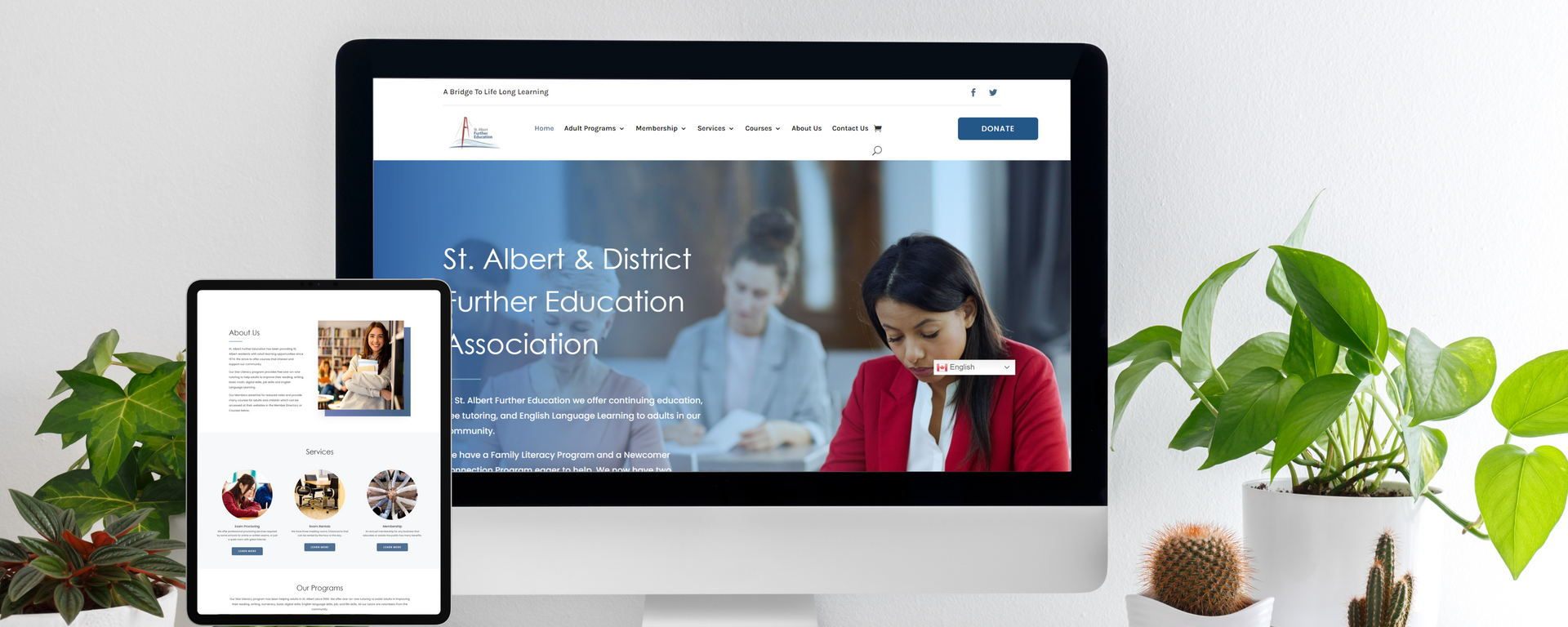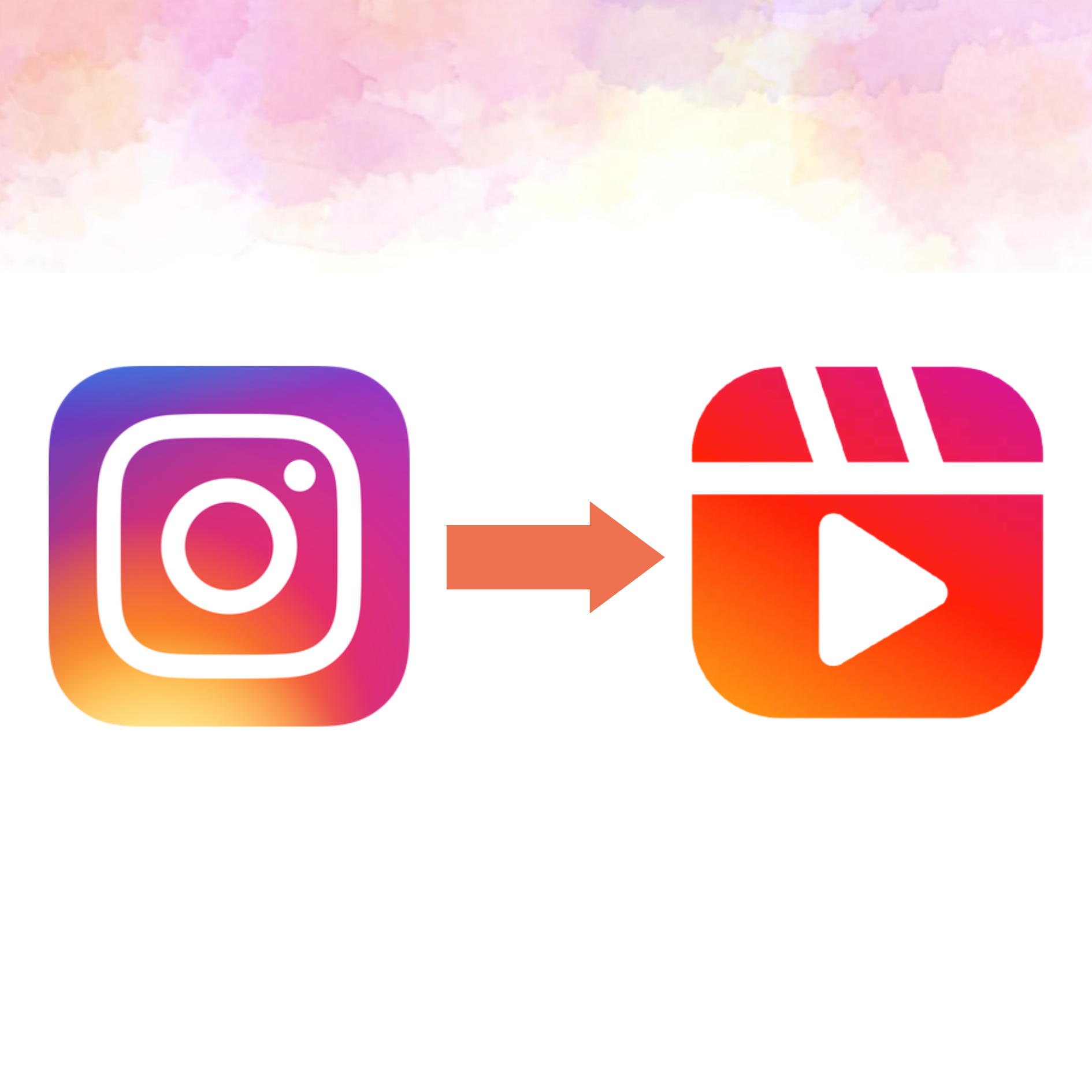
Paid Social Media Advertising: Is It Worth Your Time?
We are in the middle of a social media revolution. On average, 1.9 billion people use Facebook every day! As a result, many businesses are turning to paid advertising on these sites to reach their consumers. Paid social media advertising can be an effective way for marketers to get in front of potential customers and establish themselves as experts in their industry. However, with so many social platforms available it can be difficult to determine which ones will produce the best results at the lowest cost. So let’s take a look into the world of paid social media advertising and how it can benefit you.
What Is Paid Social Media Advertising?
To put it simply, paid social media advertising allows you to target who will see your content based on demographics such as age, gender, location and interests.
If you want to promote a product, a piece of content (blog post, e-book), or a physical store, paid ads allow you to hyper-target your niche. This enables you to deliver highly relevant and valuable information that your audience is looking for.
Paid social media advertising is a great way to boost your brand’s awareness and increase traffic to your website, or social media pages. The best part? Depending on the campaign you run, you only pay when people engage with your advertisements. But we’ll touch more on that, keep reading!
Organic vs Paid Social Media
As a business owner or marketer, you likely are familiar with the concept of organic traffic. But for those who aren’t, here’s a quick recap.
Organic -
Posting content across various platforms to people who already follow you. Your posts get shown to more people if your followers engage with the post (liking, sharing, commenting).
If done correctly, organic traffic can be a great way to help your business grow. However, in the current world of digital marketing, we live in, organic on its own often isn’t enough.
Take Facebook posting for example: “The average reach for an organic Facebook post is down to 5.2% at the end of 2020. At the end of 2019, it was 5.5% and the year before that 7.7%” according to this
post from Hootsuite. They go on to say that the average engagement rate for a post was
0.25%!
So what does this mean for you and your business?
It means that if you haven’t started leveraging paid social media advertising, you’re going to want to start. Now that doesn’t mean you need to break the bank and throw your entire marketing budget at paid social ads. However, it should gradually be incorporated.
Social media has evolved to the point where it is now a very real player in customer acquisition and business growth. Even with all the societal changes imposed by the pandemic, and privacy changes to
Apple’s IDFA, social ad spending is expected to approach
$56billion in 2022.
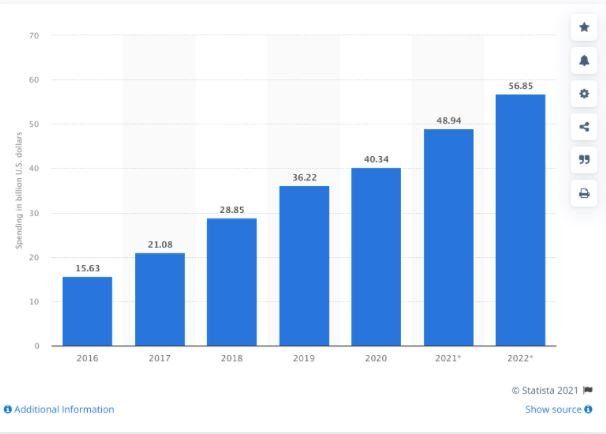
To sum it up, organic and paid social media each have pros and cons. A paid strategy will allow you to target your specific customers, and reach large quantities of people. However, you will need to be able to afford your ads and also understand the analytics of your campaigns. Which is a skill on its own.
Organic, on the other hand, helps you maintain the relationship with your current customers, and is useful for customer service and awareness. While the downside is that it can be very time-intensive and requires a lot of work to be generating new content on a consistent basis.
With the statistics of organic reach and engagement being what they are, and still, on the decline, it’s safe to say some type of paid ads strategy is a fact of social media life today.
Social Media Advertising Cost
With so many different platforms to advertise on, there’s no universal answer to how much paid social media advertising costs. So it’s important to understand some key performance indicators (KPI’s) when it comes to running ads. KPI’s might be slightly different for your business, depending on your objectives, but here are 5 common ones:
- Cost per Click (CPC)
- Cost Per Mille/Impression (CPM)
- Click-Through Rate (CTR)
- Conversion Rate (CVR)
- Return On Ad Spend (ROAS)
Cost per Click
CPC is the cost you as an advertiser will pay to a platform for every click on your ad. Across all industries, the average CPC is $1.72.
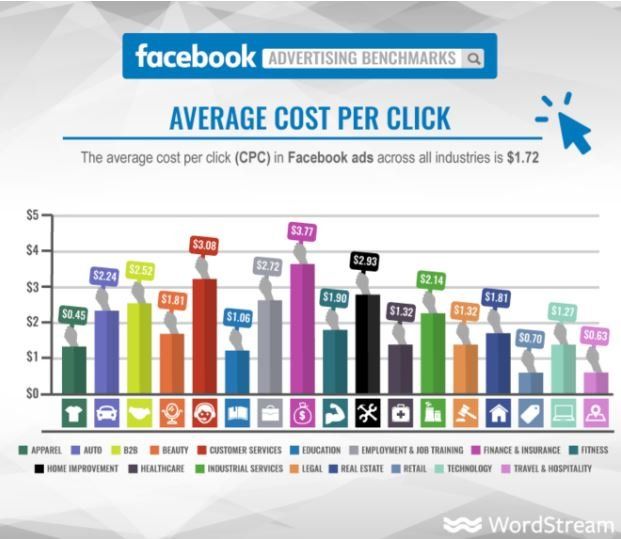
CPC plays a factor in almost every ad type including:
- Image ads
- Video ads
- Carousel ads
- Text ads
- Shopping ads
- Facebook, Instagram, LinkedIn, etc.
Cost per Mille
CPM costs are based on impressions. An impression is anytime your ad is displayed on someone’s screen. Whether that person engages with the ad or not is irrelevant, as long as it was shown on their screen it will count towards your impressions.
The price you pay for CPM’s is based on 1000 impressions. CPM campaigns are great for brand awareness and lead generation, as you can hyper-target your ad to your specific customers.
Click-Through Rate
CTR is a metric that measures the number of people who clicked on an advertisement in relation to how many people were shown the ad (impressions).
A higher click-through rate means more people are clicking on your ads, which is generally what you want to see.
With that being said, if your targeting isn’t done correctly, a high CTR can be a waste of money. Since you pay for clicks, if your targeting of interests or keywords is wrong, people with no intention of buying your product and service will be clicking. You want to make sure you set up your campaigns properly!
Conversion Rate
Depending on your business or objectives, a conversion could be a purchase, webinar signup, or registration. It’s essentially the percentage of people who take a particular action you want them to take on your campaign.
CVR is a great metric to track alongside your CTR. Say your goal is to get people to make a purchase. If you notice that your CTR is high, and your CVR is low, you might have a great ad being displayed to the wrong customers. If CTR is low but CVR is high, you can probably conclude your ad is targeting high-quality leads, even if the quantity isn’t what you’d like. In a perfect world, CTR and CVR are both high, this is where experimentation and lots of split testing are required!
Return On Ad Spend
ROAS is more or less the online version of Return on Investment. All you need to do to calculate your ROAS is to divide your ad revenue/ad spend. If you want to take it a step further you can divide your (ad revenue-cost of your product) / ad spend.
At the end of the day, you’re in business to be making a profit. So it’s critical to know what your ROAS is if you plan on social media advertising.
Social Media Advertising Statistics
We’ve touched on this already, but the social media advertising industry has been growing rapidly for years. Even in the face of some huge roadblocks like the pandemic.
So let’s look at some relevant statistics that will matter to you as a business owner or a marketer.
Social Media Usage
- In 2020, over 3.6 billion people are using social media, with projections of 4.41 billion in 2025

2. TikTok passes 1 billion monthly active users in only 5 years. Considering they merged with Musical.ly in 2018, and that’s when they really started gaining traction. This is even more impressive.
3. The average daily social media user spends 145 minutes per day online.
Advertising
- 83% of B2B marketers in North America use paid social media to distribute content. Ranking higher than search engine marketing, banner ads, and more.
2. Google and Facebook share the largest ad spend of all platforms in the US, at 36% and 19% respectively in 2020.
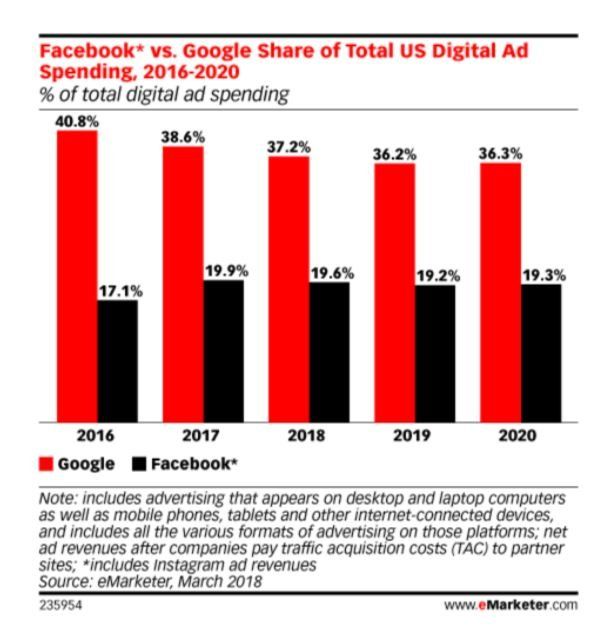
3. Videos Go Viral: 92% of people who watch a video share it with their friends. Videos are shared 1,200% more than links and text combined!
Social Media Platforms For Marketing
With so many social media platforms to choose from, it can be hard to know where to start and which to use. However, there isn’t exactly a clear answer to this, as each platform has its strengths.
Your type of business, whether your B2B or B2C, the industry you’re in, and your customer profile, will all influence what the best platform is for you. Luckily, there are trends and demographics we can look at to help decide where to put your advertising dollars. Some of the most common platforms you’ll be looking are likely to include:
- YouTube
Even with the growth of new social platforms, there’s no denying that Facebook is still the gold standard for social media advertising.
Facebook has a huge user base of customers that have money to spend. Especially with a big increase in
seniors using the platform. So if you have a product or service that can help improve the lives of this demographic, consider Facebook.
That’s not to say that you can’t still target the younger generations on Facebook. As you can see, 25-34 year old's are still the largest advertising audience currently.
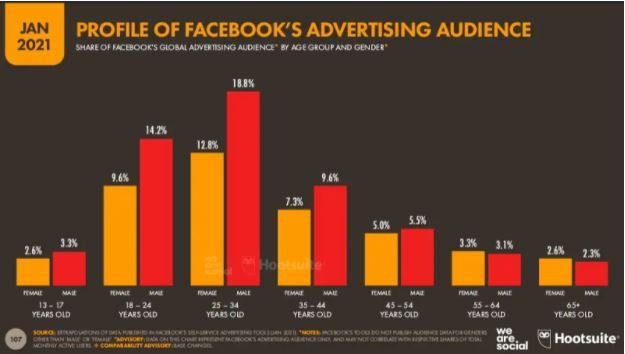
But ages 65+ are quickly growing in reach.

Video
Another thing to consider when deciding if Facebook is right for you is if your ad is a video. Facebook is quickly climbing the ranks as a video platform. In 2020, Facebook Watch topped 1.25 billion monthly viewers.
Nearly
¼ of all the ads spent on video in 2018 were captured by Facebook (including Instagram). 24.5% of video spending and $6.81 billion were captured, and this growth is not going to slow down anytime soon.
Creative Flexibility
You aren’t limited to only video ads on Facebook. There are many ad types you can run. This variety is what makes Facebook so powerful. Other ad types available to name a few include:
- Image ads
- Carousel ads
- Slideshow ads
- Stories & Messenger ads
If that’s not enough, you can run all these ad types with different campaign objectives. Whether you want to simply increase your brand’s awareness, drive traffic or app installs, or get purchases, Facebook gives you the power to do this.
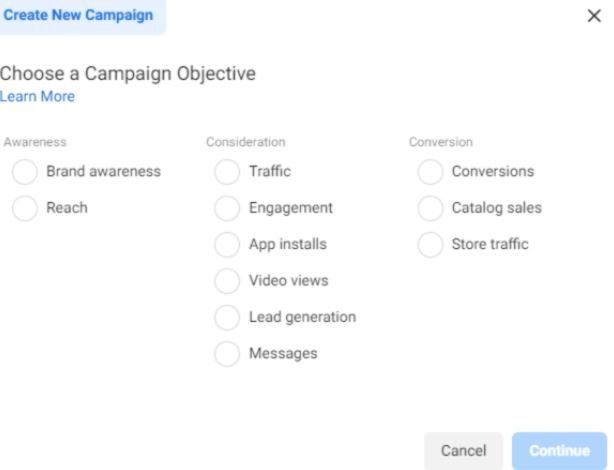
Naturally, as a “subsidiary” of Facebook, Instagram ads are pretty similar. They’re even controlled by the same Facebook Business Manager.
The biggest difference between advertising on Instagram vs Facebook is the demographic. 18-35 year old's dominate the demographic of Instagram. So if you’re running ads on Instagram, make sure your customer profile matches the platform.
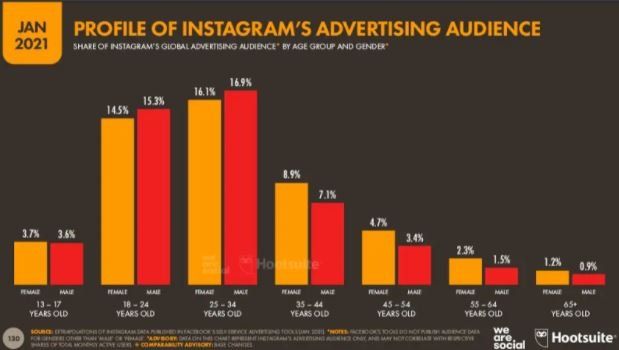
Twitter makes its name as the go-to place for breaking news and a community to discuss current events. It’s also a great platform that many businesses use for customer service.
It’s also currently a great platform for engagement. In Twitter’s Q3 report for 2021, they report that ad engagement increased 6%, year over year. Twitter’s Monetizable Daily Active Usage in Q3 was 211 million, a 13% increase.
Pinterest
Pinterest is a unique platform for advertisers for a few reasons. Many Pinterest users flock to the platform for product discovery, and over ¾ of Pinterest’s 200 million advertising audience are women.

While Pinterest is starting to increase its user base among other demographics. There’s no question that as of now, the platform is dominated by users that are women. Keep that in mind if you decide to run ads on Pinterest.
Other Platforms
As stated earlier, there are many platforms to run advertising on. LinkedIn is great for targeting business professionals and B2B companies. YouTube is dominated by video advertising.
But in addition to the 6 listed at the top of this section, TikTok or Snapchat might work for your business. Maybe it makes sense for your business to be on Quora, or Tumblr.
There isn’t one be-all, end-all platform for advertising. You need to decide who your customers are, where they hang out online, and what kind of creative content they want to see. Once you answer those questions, then you can make a choice on where to begin!
Conclusion
Whether you’re a small business owner or an established company, the benefits of paid social media advertising can be substantial. Not all platforms are created equal, and they won’t all serve the same purpose. A great Facebook image ad obviously is incompatible with TikTok for example.
The key is to understand what each platform offers before you commit significant resources to market on a particular platform. You also want to understand exactly who your customers are, and how to target them. If done correctly, you will generate more leads and sales for your business. Making it well worth your time and investment



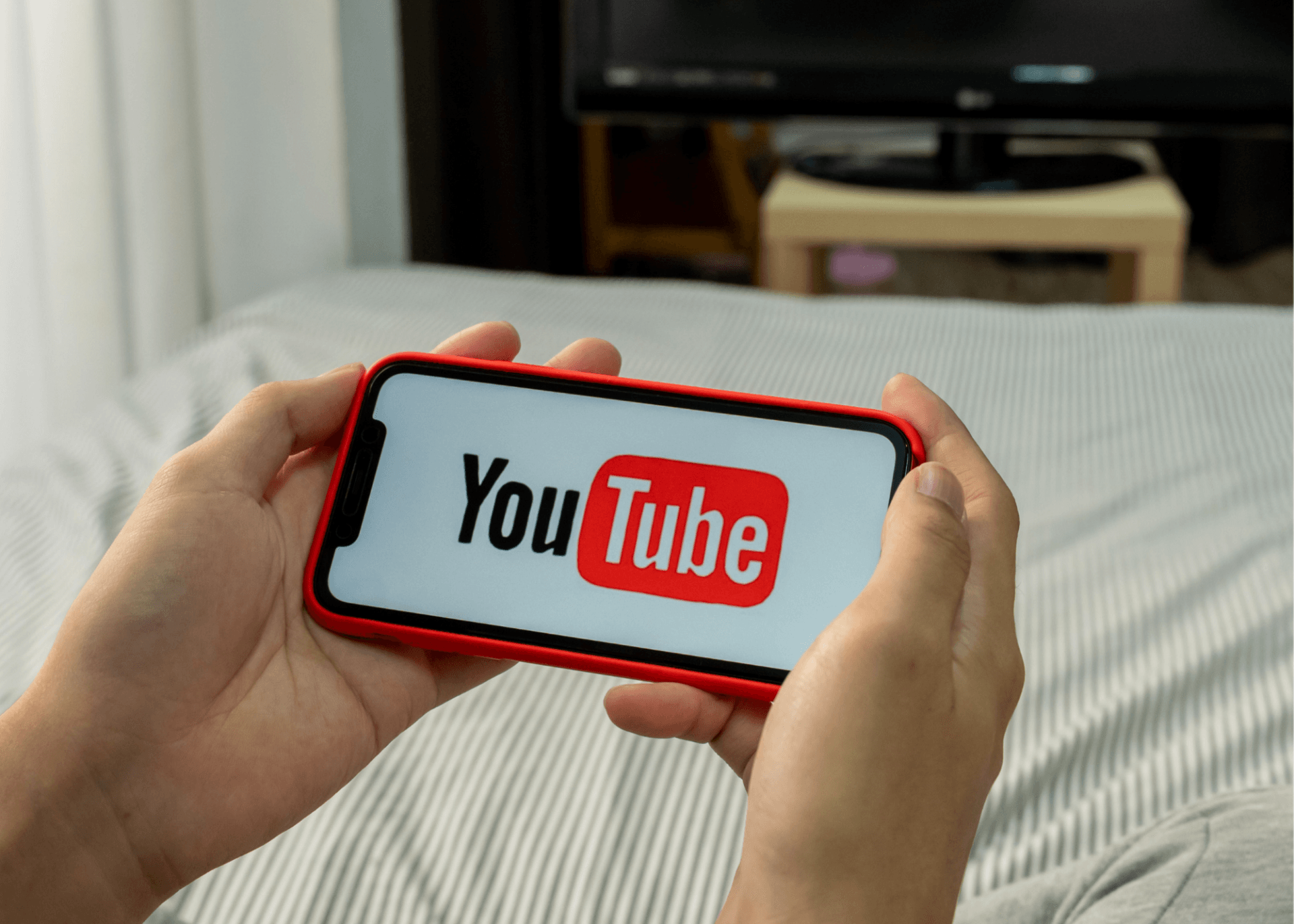
© KRE8TIVEAGENCY | ALL RIGHTS RESERVED | PRIVACY POLICY
Stay in Touch
Contact Us
We will get back to you as soon as possible
Please try again later
